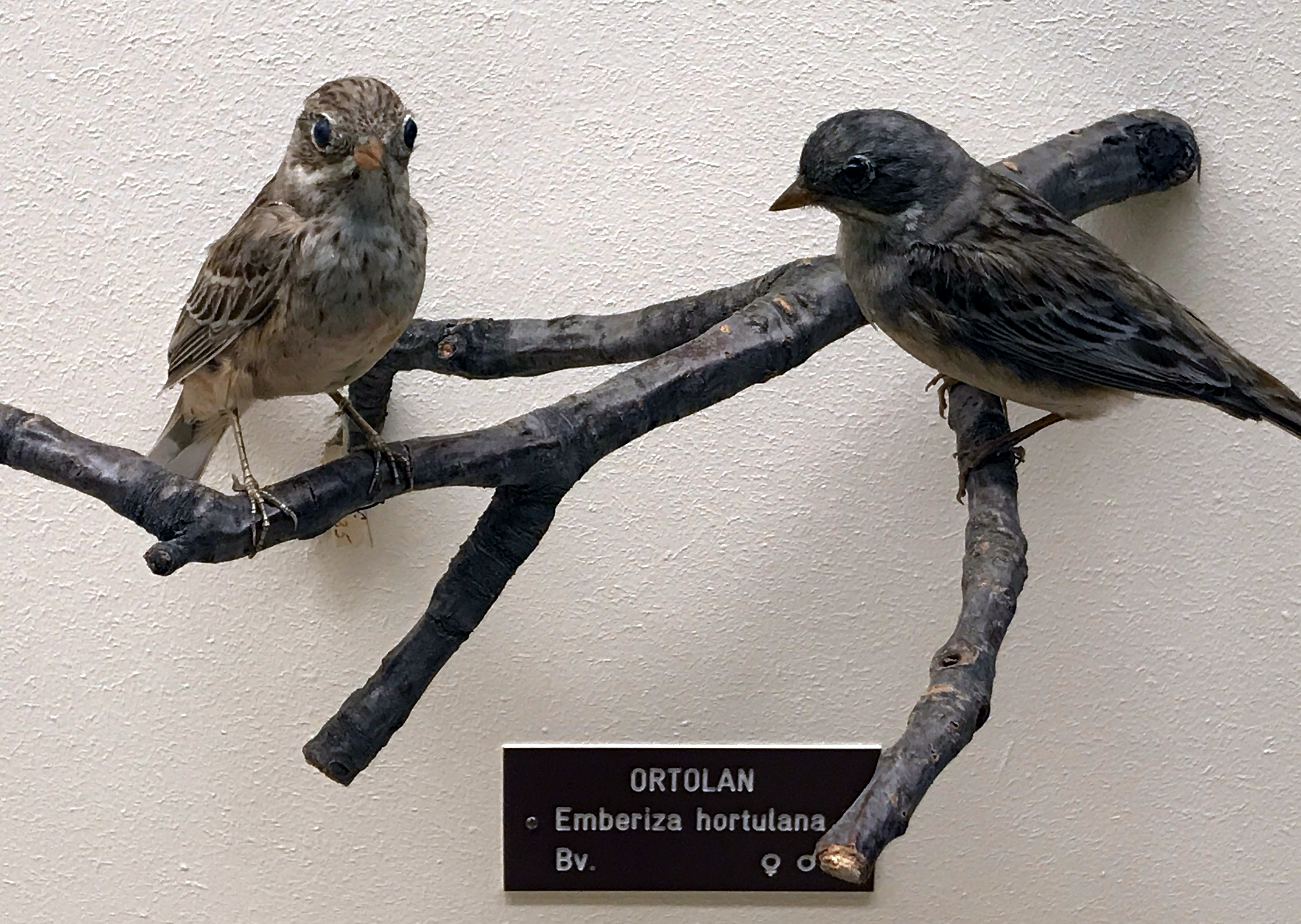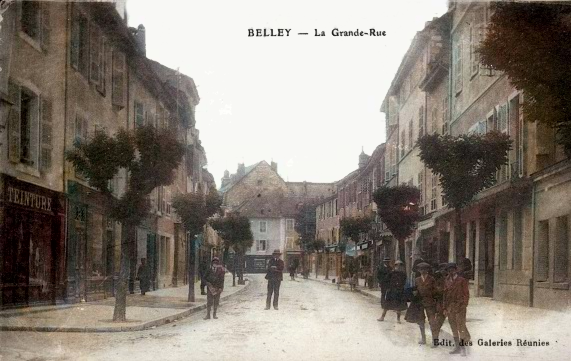|
Ortolan Bunting
The ortolan (''Emberiza hortulana''), also called ortolan bunting, is a Eurasian bird in the bunting family Emberizidae, a passerine family now separated by most modern scholars from the finches, Fringillidae. The genus name ''Emberiza'' is from Alemannic German , a bunting. The specific name ''hortulana'' is from the Italian name for this bird, . The English ''ortolan'' is derived from Middle French , "gardener". The ortolan is served in French cuisine, typically cooked and eaten whole. Traditionally, diners cover their heads with their napkin or a towel while eating the delicacy. The bird is so widely eaten that its French populations dropped dangerously low, leading to laws restricting its use in 1999. In September 2007, the French government announced its intent to enforce long-ignored laws protecting the bird. Taxonomy The ortolan bunting was described by the Swedish naturalist Carl Linnaeus in 1758 in the tenth edition of his ''Systema Naturae'' and retains its orig ... [...More Info...] [...Related Items...] OR: [Wikipedia] [Google] [Baidu] |
Carl Linnaeus
Carl Linnaeus (23 May 1707 – 10 January 1778), also known after ennoblement in 1761 as Carl von Linné,#Blunt, Blunt (2004), p. 171. was a Swedish biologist and physician who formalised binomial nomenclature, the modern system of naming organisms. He is known as the "father of modern Taxonomy (biology), taxonomy". Many of his writings were in Latin; his name is rendered in Latin as and, after his 1761 ennoblement, as . Linnaeus was the son of a curate and was born in Råshult, in the countryside of Småland, southern Sweden. He received most of his higher education at Uppsala University and began giving lectures in botany there in 1730. He lived abroad between 1735 and 1738, where he studied and also published the first edition of his ' in the Netherlands. He then returned to Sweden where he became professor of medicine and botany at Uppsala. In the 1740s, he was sent on several journeys through Sweden to find and classify plants and animals. In the 1750s and 1760s, he co ... [...More Info...] [...Related Items...] OR: [Wikipedia] [Google] [Baidu] |
Binomial Nomenclature
In taxonomy, binomial nomenclature ("two-term naming system"), also called binary nomenclature, is a formal system of naming species of living things by giving each a name composed of two parts, both of which use Latin grammatical forms, although they can be based on words from other languages. Such a name is called a binomial name (often shortened to just "binomial"), a binomen, name, or a scientific name; more informally, it is also called a Latin name. In the International Code of Zoological Nomenclature (ICZN), the system is also called nomenclature, with an "n" before the "al" in "binominal", which is a typographic error, meaning "two-name naming system". The first part of the name – the '' generic name'' – identifies the genus to which the species belongs, whereas the second part – the specific name or specific epithet – distinguishes the species within the genus. For example, modern humans belong to the genus ''Homo'' and within this genus to the species ''Hom ... [...More Info...] [...Related Items...] OR: [Wikipedia] [Google] [Baidu] |
Jean Anthelme Brillat-Savarin
Jean Anthelme Brillat-Savarin (; 2 April 1755 – 2 February 1826) was a French lawyer and politician, who, as the author of ''Physiologie du goût'' (''The Physiology of Taste''), became celebrated for his culinary reminiscences and reflections on the craft and science of cookery and the art of eating. Rising to modest eminence in the last years of France's Ancien Régime, Brillat-Savarin had to escape into exile when the Reign of Terror began in 1793. He spent nearly three years in the United States, teaching French and playing the violin to support himself, before returning to France when it became safe to do so, resuming his career as a lawyer, and rising to the top of the French judiciary. ''The Physiology of Taste'' was the product of many years' writing in the author's spare time. Published weeks before his death in 1826, the work established him alongside Alexandre Balthazar Laurent Grimod de La Reynière, Grimod de La Reynière as one of the founders of the genre of ... [...More Info...] [...Related Items...] OR: [Wikipedia] [Google] [Baidu] |
The Daily Telegraph
''The Daily Telegraph'', known online and elsewhere as ''The Telegraph'', is a British daily broadsheet conservative newspaper published in London by Telegraph Media Group and distributed in the United Kingdom and internationally. It was founded by Arthur B. Sleigh in 1855 as ''The Daily Telegraph and Courier''. ''The Telegraph'' is considered a newspaper of record in the UK. The paper's motto, "Was, is, and will be", was included in its emblem which was used for over a century starting in 1858. In 2013, ''The Daily Telegraph'' and ''The Sunday Telegraph'', which started in 1961, were merged, although the latter retains its own editor. It is politically conservative and supports the Conservative Party (UK), Conservative Party. It was moderately Liberalism, liberal politically before the late 1870s.Dictionary of Nineteenth Century Journalismp 159 ''The Telegraph'' has had a number of news scoops, including the outbreak of World War II by rookie reporter Clare Hollingworth, desc ... [...More Info...] [...Related Items...] OR: [Wikipedia] [Google] [Baidu] |
Net (textile)
Net or netting is any textile in which the yarns are fused, looped or knotted at their intersections, resulting in a fabric with open spaces between the yarns. Net has many uses, and comes in different varieties. Depending on the type of yarn or filament that is used to make up the textile, its characteristics can vary from durable to not durable. Uses People use net for many different purposes. Fishing Netting is one of the key components to fishing in mass quantities. This textile is used because of its sturdy yet flexible origin, which can carry weight yet, still be lightweight and compactable. Fisherman use netting when trawling, because it is sturdy enough to carry large amounts of weight as fish are trapped, pulled, then lifted out of water. Oftentimes, the filaments that make up the yarn are coated with wax or plastic. This coating adds a waterproof component to the textile that provides even more reliability. Fashion Netting has been used in fashion for ce ... [...More Info...] [...Related Items...] OR: [Wikipedia] [Google] [Baidu] |
Wine Spectator
''Wine Spectator'' is an American lifestyle magazine that focuses on wine, wine culture and wine ratings. It is the flagship publication of M. Shanken Communications, which also publishes ''Cigar Aficionado'', ''Whisky Advocate'', ''Market Watch'', ''Shanken News Daily'' and ''Shanken’s Impact Newsletter''. ''Wine Spectator'' editors review more than 15,000 wines each year in blind tastings. Wines are reviewed on a 100-point scale. Every issue contains 400 to 1,000 wine reviews with detailed tasting notes and drink recommendations Each year since 1988, the publication has released its ''Top 100'' list, where editors select the most exciting wines from the thousands reviewed during the course of the year. The ''Top 100'' includes the coveted ''Wine of the Year'' honor. Jeffery Lindenmuth is executive editor. As of 2023, senior editors include Bruce Sanderson, James Molesworth, Alison Napjus, MaryAnn Worobiec, Tim Fish, Kristen Bieler and Aaron Romano. Past wine tasters includ ... [...More Info...] [...Related Items...] OR: [Wikipedia] [Google] [Baidu] |
Armagnac (brandy)
Armagnac (, ) is a distinctive kind of brandy produced in the Armagnac region in Gascony, southwest France. It is distilled from wine usually made from a blend of grapes including Baco 22A, Colombard, Folle blanche and Ugni blanc, traditionally using column stills. This is in contrast to the pot stills used in the production of cognac, which is made predominantly from ugni blanc grapes. The resulting spirit is aged in oak barrels before release. Production is overseen by the Institut national de l'origine et de la qualité (INAO) and the Bureau National Interprofessionel de l'Armagnac (BNIA). Armagnac was one of the first areas in France to begin distilling spirits. Because the overall volume of production is far smaller than cognac production, the brandy is less known outside Europe. In addition, for the most part it is made and sold by small producers, whereas cognac production is dominated by big-name brands, especially Courvoisier (owned by Campari Group), H ... [...More Info...] [...Related Items...] OR: [Wikipedia] [Google] [Baidu] |
Beetle
Beetles are insects that form the Taxonomic rank, order Coleoptera (), in the superorder Holometabola. Their front pair of wings are hardened into wing-cases, elytra, distinguishing them from most other insects. The Coleoptera, with about 400,000 described species, is the largest of all orders, constituting almost 40% of described arthropods and 25% of all known animal species; new species are discovered frequently, with estimates suggesting that there are between 0.9 and 2.1 million total species. However, the number of beetle species is challenged by the number of species in Fly, dipterans (flies) and hymenopterans (wasps). Found in almost every habitat except the sea and the polar regions, they interact with their ecosystems in several ways: beetles often feed on plants and fungi, break down animal and plant debris, and eat other invertebrates. Some species are serious agricultural pests, such as the Colorado potato beetle, while others such as Coccinellidae (ladybirds or ... [...More Info...] [...Related Items...] OR: [Wikipedia] [Google] [Baidu] |
British Isles
The British Isles are an archipelago in the Atlantic Ocean, North Atlantic Ocean off the north-western coast of continental Europe, consisting of the islands of Great Britain, Ireland, the Isle of Man, the Inner Hebrides, Inner and Outer Hebrides, Outer Hebrides, the Northern Isles (Orkney and Shetland), and over six thousand smaller islands. They have a total area of and a combined population of almost 72 million, and include two sovereign states, the Republic of Ireland (which covers roughly five-sixths of Ireland), and the United Kingdom, United Kingdom of Great Britain and Northern Ireland. The Channel Islands, off the north coast of France, are normally taken to be part of the British Isles, even though geographically they do not form part of the archipelago. Under the UK Interpretation Act 1978, the Channel Islands are clarified as forming part of the British Islands, not to be confused with the British Isles. The oldest rocks are 2.7 billion years old and are ... [...More Info...] [...Related Items...] OR: [Wikipedia] [Google] [Baidu] |
Emberiza Hortulana MHNT
The buntings are a group of Old World passerine birds forming the genus ''Emberiza'', the only genus in the Family (biology), family Emberizidae. The family contains 44 species. They are seed-eating birds with stubby, conical bills. Taxonomy The family Emberizidae was formerly much larger and included the species now placed in the Passerellidae (New World sparrows) and Calcariidae (longspurs and snow buntings). Molecular phylogenetic studies found that the large family consisted of distinct clades that were better treated as separate families. The genus ''Emberiza'' is now the only genus placed in the family Emberizidae. The genus was introduced by the Swedish naturalist Carl Linnaeus in 1758 in the 10th edition of Systema Naturae, tenth edition of his ''Systema Naturae''. The type species was subsequently designated as the yellowhammer (''Emberiza citrinella''). The genus name ''Emberiza'' is from Old German , a bunting. The origin of the English "bunting" is unknown. A 2008 g ... [...More Info...] [...Related Items...] OR: [Wikipedia] [Google] [Baidu] |
Yellowhammer
The yellowhammer (''Emberiza citrinella'') is a passerine bird in the Emberiza, bunting family that is native to Palearctic, Eurasia and has been introduced species, introduced to New Zealand and Australia. Most European birds remain in the breeding range year-round, but the eastern subspecies is partially bird migration, migratory, with much of the population wintering further south. The male yellowhammer has a bright yellow head, streaked brown back, chestnut rump, and yellow under parts. Other plumages are duller versions of the same pattern. The yellowhammer is common in open areas with some shrubs or trees, and forms small flocks in winter. Its song has a rhythm like "A little bit of bread and no cheese". The song is very similar to that of its closest relative, the pine bunting, with which it interbreeds. Breeding commences mainly in April and May, with the female building a lined cup nest in a concealed location on or near the ground. The three to five eggs are patterned ... [...More Info...] [...Related Items...] OR: [Wikipedia] [Google] [Baidu] |
Molecular Phylogenetics And Evolution
''Molecular Phylogenetics and Evolution'' is a peer-reviewed scientific journal of evolutionary biology and phylogenetics. The journal is edited by E.A. Zimmer. Indexing The journal is indexed in: * EMBiology *Journal Citation Reports *Scopus Scopus is a scientific abstract and citation database, launched by the academic publisher Elsevier as a competitor to older Web of Science in 2004. The ensuing competition between the two databases has been characterized as "intense" and is c ... * Web of Science External links * Elsevier academic journals Evolutionary biology journals Phylogenetics Academic journals established in 1992 Monthly journals {{biology-journal-stub ... [...More Info...] [...Related Items...] OR: [Wikipedia] [Google] [Baidu] |










